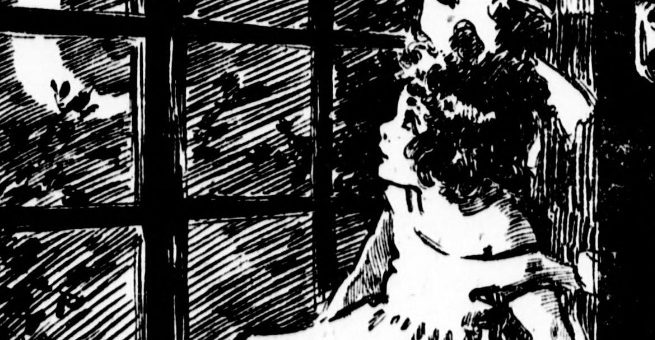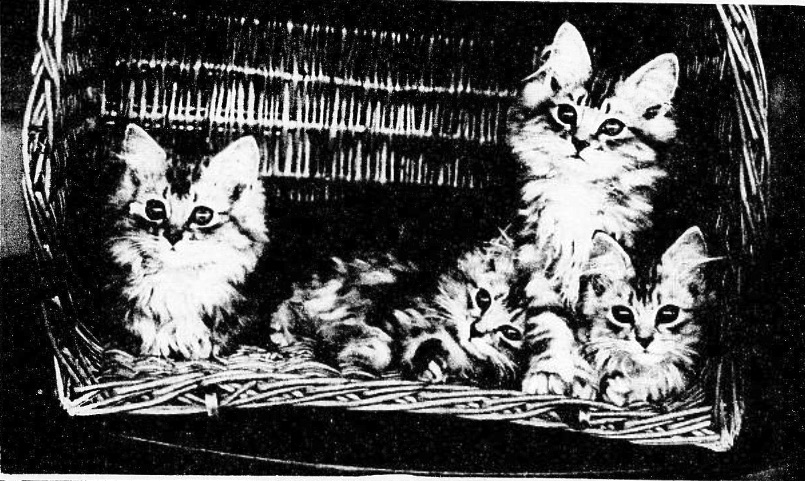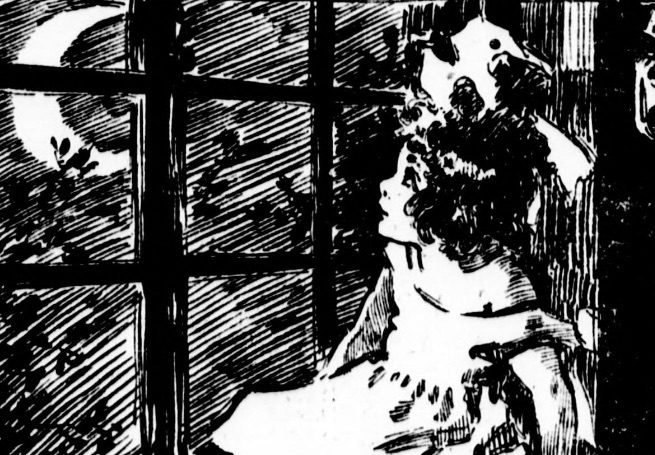
Cats, women, and the moon are symbolically linked together. In the following article, originally published in 1914, the writer connects these three magical symbols together, from ancient religions to the witch burnings and later superstitions.
Why We Think of Cats, the Moon and Women Together
By Prof. J. C. Barbier
In the very ancient and widespread feeling that women, cats and thereon are linked together by certain subtle likenesses we have one of the most curious phenomena of the human mind. The moon is invariably apostrophized as “she.” Invariably we associate cats with a mistress and not with a master, and woman throughout the ages has been called either “a full moon in loveliness” by one side of a “cat” by the other.
We never associate the sun with the feminine, nor do we think of dogs as a type as feminine, and when a man is compared with either the moon or cats it gives us a distinct shock.

We never picture a witch flying into the sun with a dog on her shoulder, but the symbol of the old lady on the broomstick with a black cat on her shoulder and flying across the moon is one that exists in all countries.
In Bubastis, in ancient Egypt, where religion was the most highly specialized in the world, cats were directly represented as being a part of a trinity composed of the moon, women and themselves. Even Isis, the wife of the great god Osiris, was sometimes thus represented. Indeed, as far back as we can go in Egypt the cat symbolized the moon, and in that significance its body always bore the head of a woman.
Perhaps there were some natural reasons for this association – undoubtedly there must have been – which were more plain to our ancient forefathers than to us. The curious influence of the moon upon the majority of people, which tends to stimulate suggestibility, hysteria and other subconscious phenomena, more in women than in men, is probably one reason. The effect of the moon upon cats, which love to prowl under its rays in the night, and the similarity of its waxing and waning with the dilation and contracting of a cat’s eyes is, no doubt, also one of the reasons at the bottom of this association. The feline love of comfort and luxury and its general attitude of tolerating more than welcoming demonstrations of affection is in itself an attitude which women during the long ages of their repression by man intensified for their own protection. There is little doubt that the trait was noticed by the observers throughout the world who make superstitions.
Superstition is usually, by the way, only true psychology with the wrong dress. There is a basis of truth at the bottom of all of it. The mind of man cannot create anything out of nothing. He must have the basis of the actual to work upon. If he twists and disguises his basis it is simply the task of keen minds to strip the husking from the kernel of truth and find out just what it is that gave rise to the superstition.
There is, too, the changeableness of the moon, in which poets have always found an analogy for the shifting of women’s moods.

At the beginning there is no doubt that the curious association of the three was complimentary. Diana, the moon goddess, in one of the old Roman poems turns herself into a cat to help the gods in their fight against the Titans. And in all the earliest myths woman, cat and moon are invariably bound together in complimentary fashion.
Later, when through causes of which we know little, the superstitions of all the races degenerated, this complimentary quality was lost, and, even with the moon, stress was laid upon the unpleasant similarities. Compliment was turned to insult. Nevertheless, the superstitions, inverted as they were, ran on with full, if not fuller, force.
In the Middle Ages, and after, women were burned at the stake when convicted of the charge that they had conversed with a devil in the shape of a black cat.
Cats were connected with all the baleful influences of the moon. In Yucatan, the descendants of the Mayas pinched their tails to drive away an eclipse. As emblems of the devil they were flung into the fires in Paris on St. John’s night. The mystic seven return again in the Hungary legend that every black cat turns into a witch at the age of seven. Grimm gives it as a common saying that a cat at twenty turns witch and a witch of a hundred turns cat again.
The exit and entrance of a strange cat were ominous. Shylock speaks of some that go mad if they behold one. Tradition says that the great Napoleon had a marked fear of them, and that Henry III of France swooned at sight of one.
Four ministers attested the truth of the tale which Captain Burt brought from Scotland in 1730, that the leg of a cat cut off by a man it attacked turned into the leg of an old woman. The serpent woman Lilith, who tempted Adam, was pictured in the sixteenth century with the body of a cat.
In agricultural communities both the moon and cats are consulted about rain and frost.
If the cat scratched its ear it is a true sign of rain, and if it sits with its back to the fire, as the North Carolina mountaineers say, a cold snap is inevitable.
However, the new era of equal suffrage may extricate women from these time defying superstitions which have so zealously preserved her honorable ancient associations with the moon and cats.
Source: Omaha daily bee. (Omaha [Neb.]), 22 Nov. 1914.

